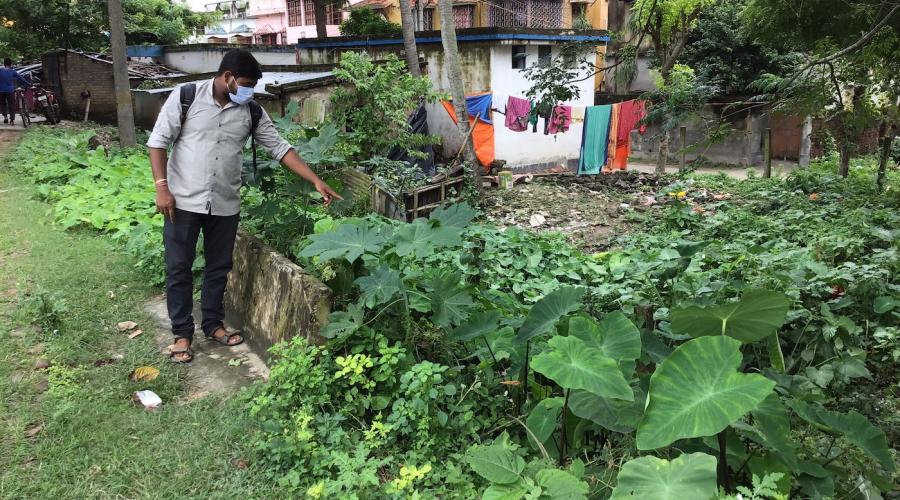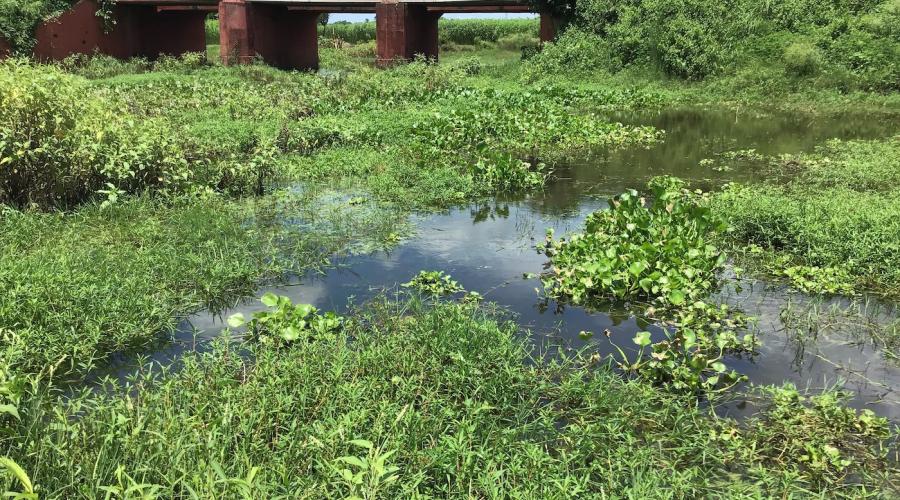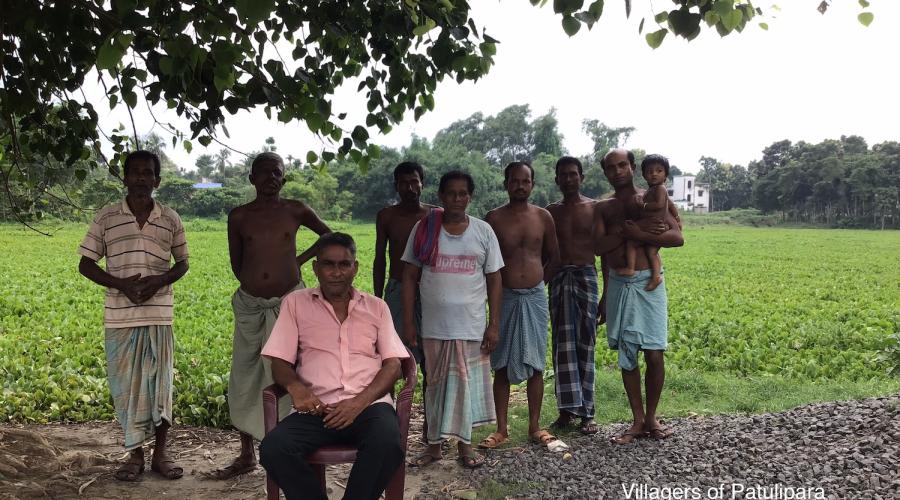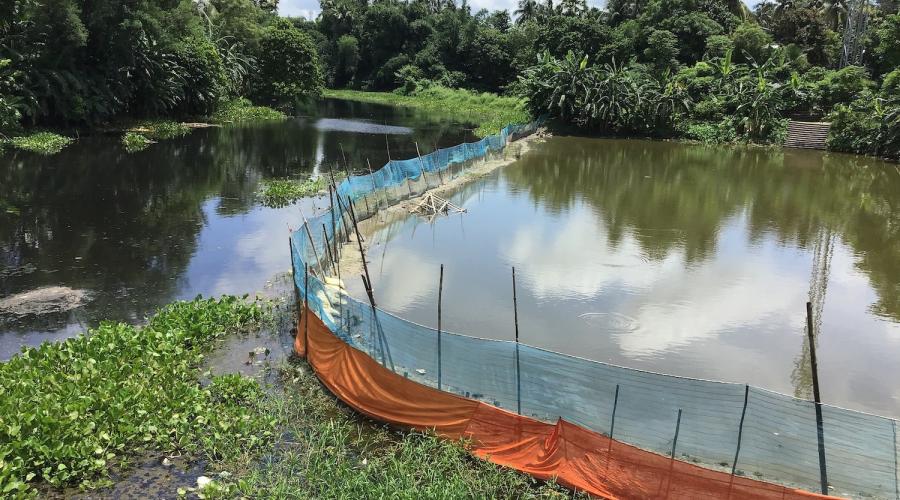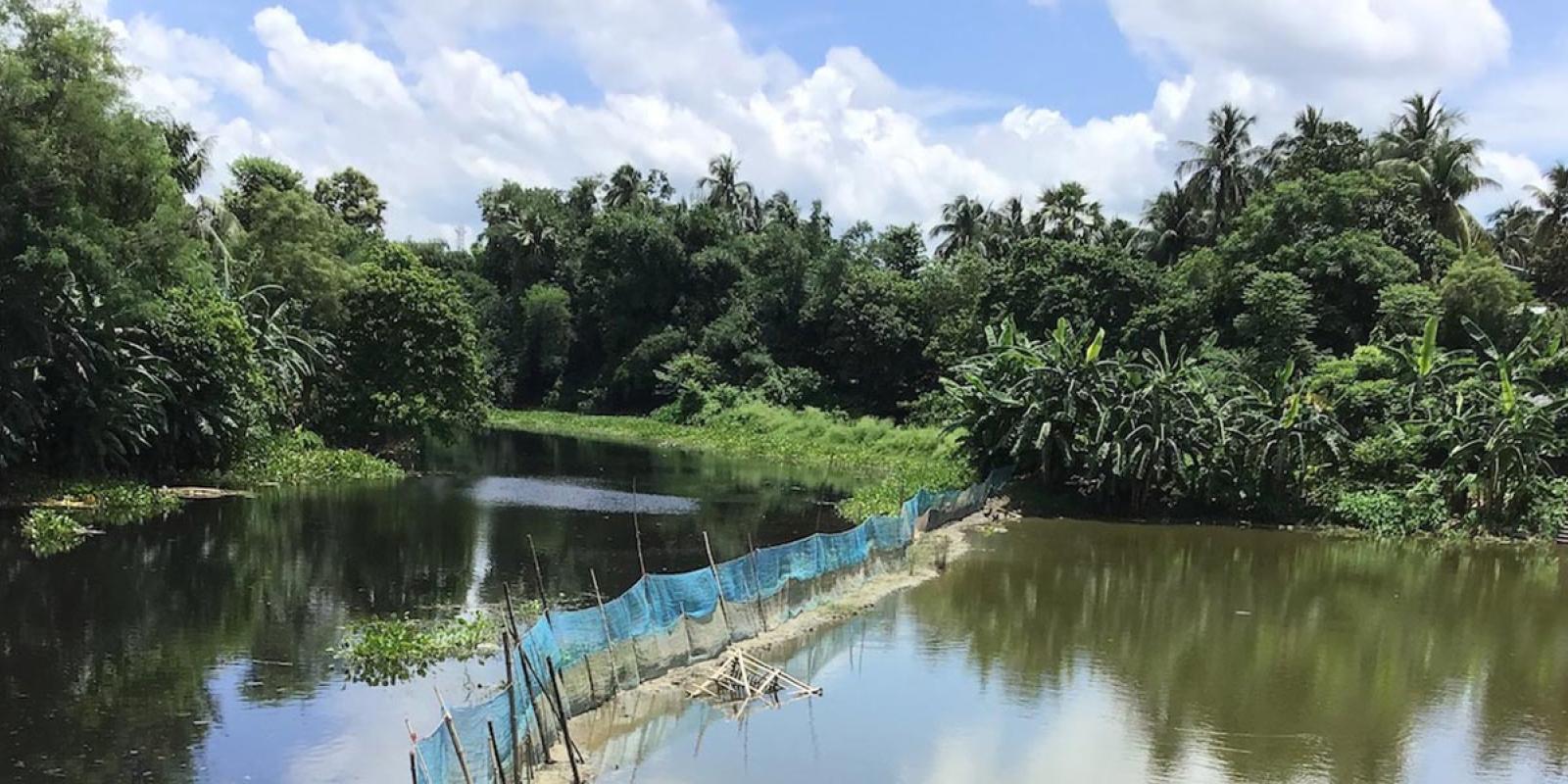
The project focuses on the entire 32 km stretch of Anjana river; a minor waterway in the lower GBM delta. The river originates from Jalongi river and passes through the historic city of Krishnanagar, currently a major agricultural town and district headquarter. After that, it passes through rural areas i.e. Dogachi, Dharmadaha, Patuli, Badkulla, Chandandaha and Vyaspur, finally meeting Churni river at Vyaspur. The river acted as important inland trading route between 16th and 18th century. After the introduction of railway in 1899, the river lost its importance. It caters to almost 0.4 million people.
Rationale
The river has a long history of anthropogenic actions starting from blocking of the origin of the river with mud wall to stop enemy fleets from entering Krishnanagar. Later similar actions were taken by Britishers to stop the revolts. The colonial intervention of building a rail-bridge and building structures right on the floodplain started the demise of the river. Today the river is full of garbage, its origin is completely obscured and portions of it is cut off to for aquaculture.
The river illustrate the impact of long-term anthropogenic actions; restricting water flow via dams, encroaching and modifying floodplains, embankments, sand and soil mining, restricting sedimentation and changing land-use; — on minor waterways. In addition, changing climatic conditions, socio-economic changes, and political changes affect the bio-physical and socio-cultural conditions of them. In future, this will prove disastrous to the inhabitants living around these minor waterways. Such waterways are extremely important in the hydrological regime of the delta. They distribute excess water and silt, serve as source for surface water to hinterland, act as drainage system, improves food security to people in hinterland, yet these waterways are often neglected in conventional water governance regimes. They are part of the overarching climate goals, yet they are generally overlooked. If unattended, this will prove disastrous to the inhabitants living around these minor waterways. At the same time, To prevent this from happening, to become resilient for the evolving future, and to act on commitments to climate action agreements, alternative strategies must be considered. In this regard, transformational resilience; an outcome oriented, multi-dimensional, cross-scale, just, and dynamic system which can trigger regime shifts;- might offer a relevant strategy. At the same time, studying the applicability of transformational resilience in case of Anjana river will pave way to understand a. the contribution and impact of minor waterways on delta, c. resilience for other minor waterways in delta. and b. minor waterways as units for creating resilience delta.
Strategy
The study will employ a mix of academic research, awareness campaign and activism to improve the quality of water, aesthetics, and flora and fauna of the Anjana River. It also aims to revitalise the livelihoods of the people dependent on the river. At the same time, it intends to improve the socio-cultural relationship between the river and its people. Finally, it tries to create a long-term sustainable pathway for the river and the surrounding areas. In this context the transformative resilience goals for Anjana river can be defined as the following:
- To revitalize the livelihoods of the local fishermen, agriculturists, or any other group whose livelihoods are legally dependent on the river.
- To reinstate the right to access the water in selective areas where encroachments have occurred.
- To reinstate the right to access the river for economic, social and cultural purposes
- To ensure the environmental protection of the river by inclusion of marginal actors in the decision-making process
Methods
The study will employ several researchers and other practitioners from different disciplines (literature, history, geography, economy, anthropology, hydraulics, environmental sciences, spatial planning) to collaborate and synthesize a methodological approach to create a roadmap for transformational resilience.
To tell the biography of Anjana river, process tracing, cross-case analysis and anthropogenic approach will be taken. The study will focus on how the perception about the human-land-water interaction has evolved over time and through the above mentioned methods. It will also try to find the answer to why the river is dying today. It will use both empirical and tacit knowledge for research. It will also use maps and GIS data to document the physical changes of the river and the surrounding settlements. It will try to employ other types of mapping to document peoples' perception.



